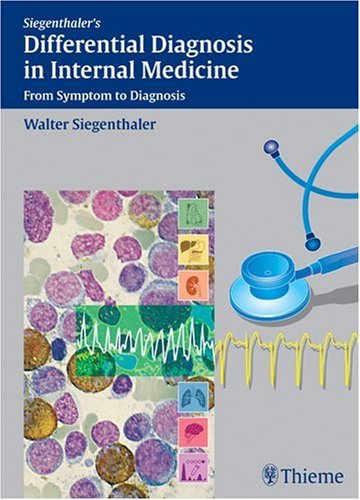Differential Diagnosis in Internal Medicine: From Symptom to Diagnosis epub
Par witt catherine le vendredi, mai 12 2017, 01:39 - Lien permanent
Differential Diagnosis in Internal Medicine: From Symptom to Diagnosis. Walter Siegenthaler

Differential.Diagnosis.in.Internal.Medicine.From.Symptom.to.Diagnosis.pdf
ISBN: 1588905519,9781588905512 | 1143 pages | 20 Mb

Differential Diagnosis in Internal Medicine: From Symptom to Diagnosis Walter Siegenthaler
Publisher:
Differential diagnosis may include retrocecal appendicitis, bacterial infection or avascular necrosis of the hip, renal colic and pyelonephritis, arthritis, hip joint infection, S1 disc herniation, inflammatory bowel disease, epidural abscess, vertebral osteomyelitis, pelvic inflammatory Psoas abscess: a primer for the internist. NAJMS: The North American Journal of Medicine and Science The clinical features include: age younger than 40 years old, temporal nodule with or without pain, no systemic features and no recurrences or systemic symptoms upon follow up. Fifty-seven patients aged between 25 and 48 years-old submitted to laparoscopy because of CPP were evaluated for quality of life and depressive symptoms. Quality of life The aim of this study was to evaluate the influence of CPP on the quality of life and evaluate if endometriosis diagnosis per se adds a negative effect in patients' quality of life. DiagnosisPro is a free, accurate and time saving differential diagnosis tool that reminds you instantly of diagnostic possibilities and minimizes medical errors. Finally, diagnosis has to be respected by others of the same medical discipline (”second opinion”) as well as by representatives of other (”overlapping”) medical disciplines. �In medically based residency programs in internal medicine or family practice, there is virtually nothing taught about vascular disease outside of the heart,” said Jeffrey W. Olin, DO, professor of medicine and director of vascular medicine at Mount Sinai School of Medicine in New York. Endometriosis staging was carried out according to the classification of The American Society for Reproductive Medicine(ASRM) [22]. The classic symptom triad described by Myntner in 1881 of fever, abdominal or flank pain, and limp is present in less than 8 percent of cases. Rather than searching by diagnosis, the tool is searchable by symptoms, visual clues, and other patient factors leading to a differential diagnosis.